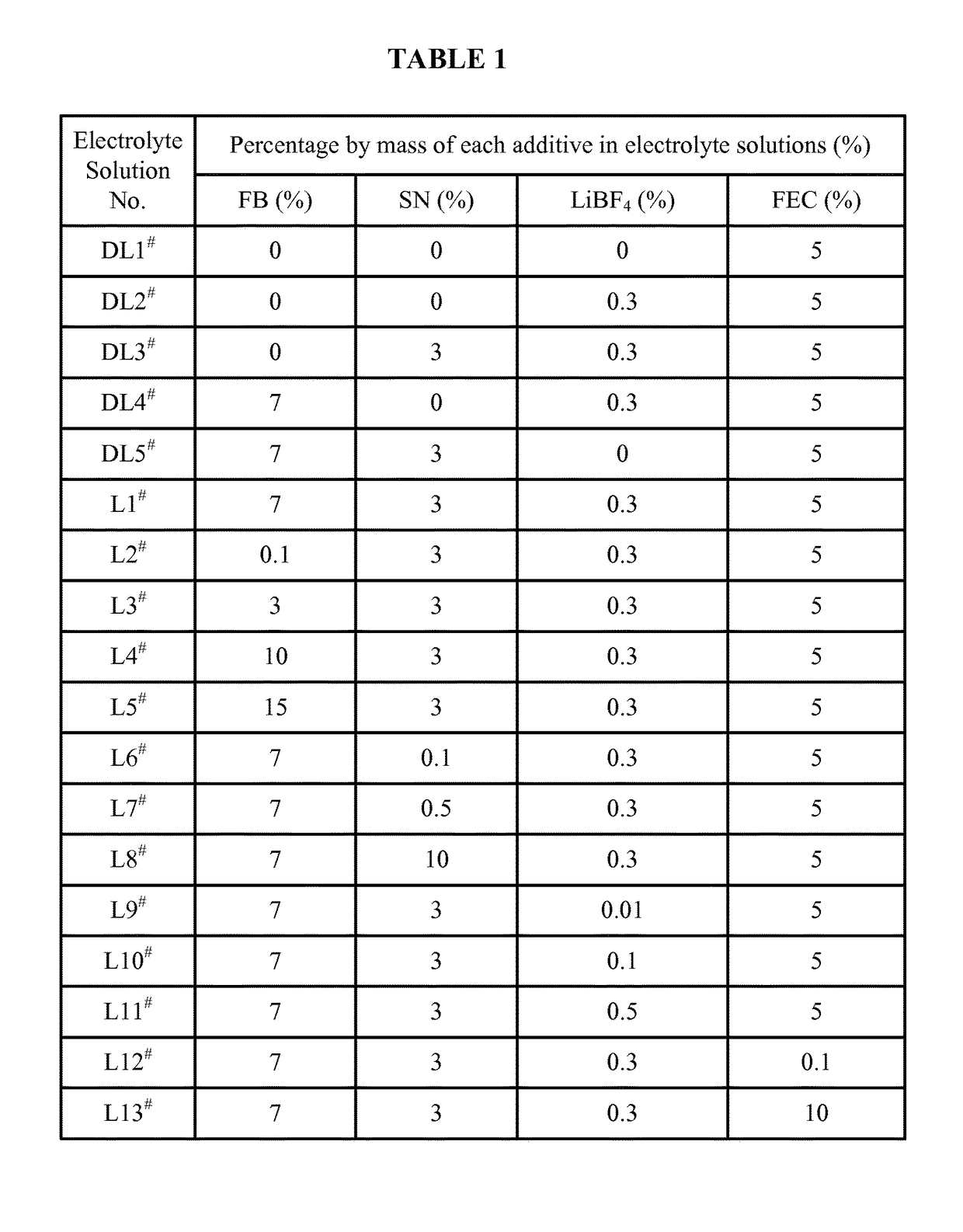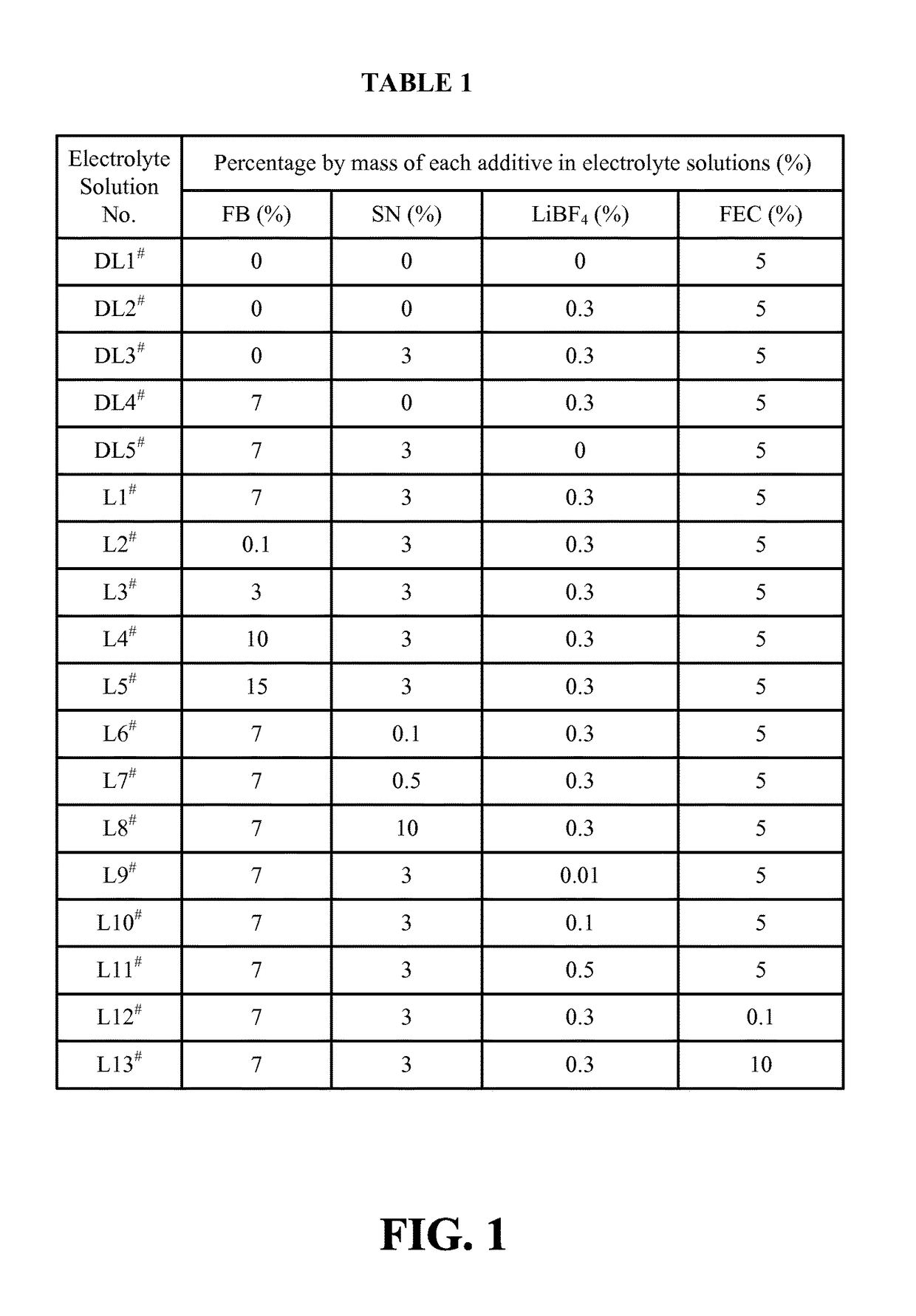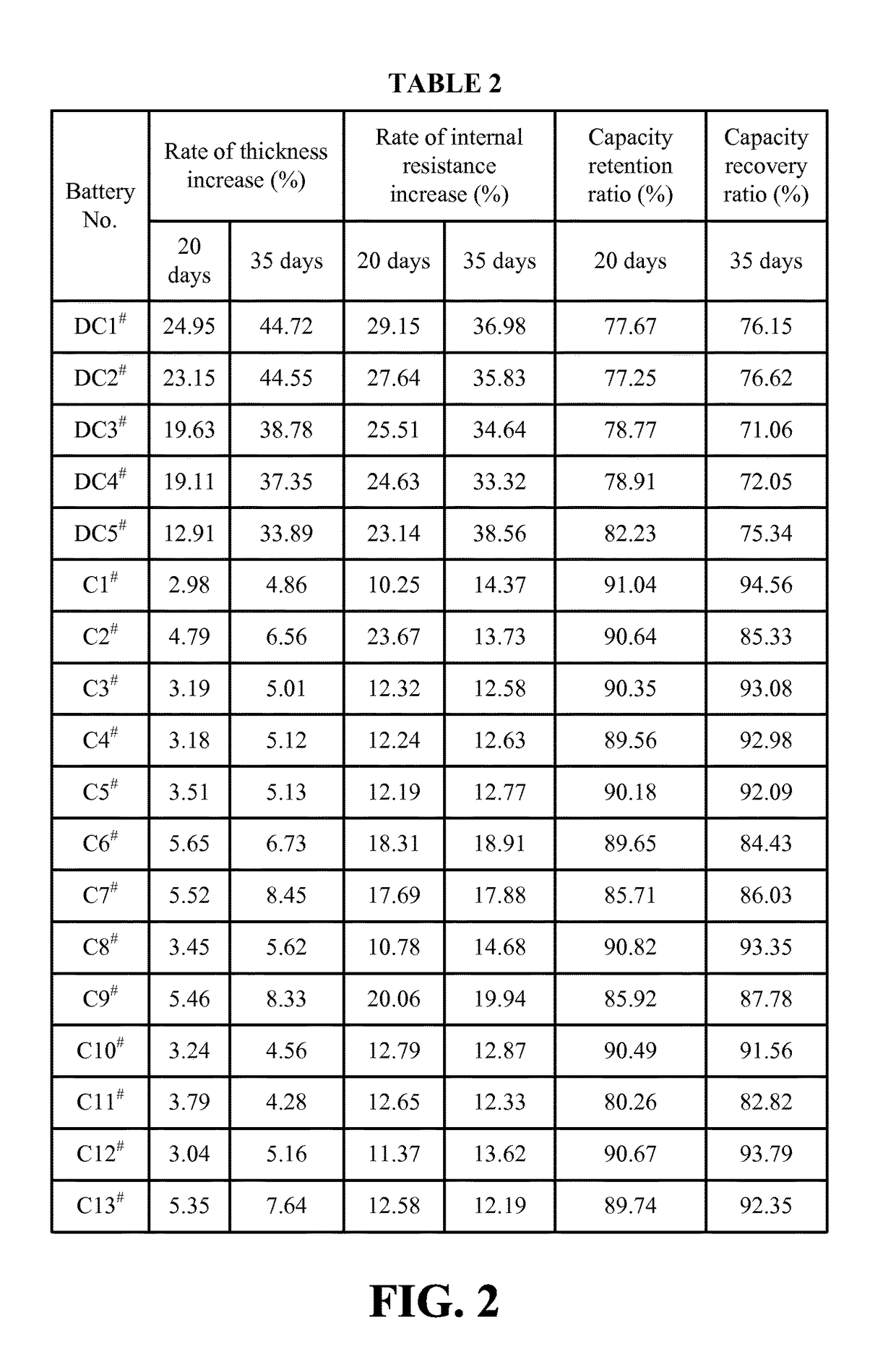Electrolyte solution and lithium ion battery using said electrolyte solution
a lithium-ion battery and electrolyte solution technology, applied in the field of batteries, can solve the problems of inability to solve the problems, the high temperature properties of the battery may deteriorate, and the charge and discharge properties of lithium-ion batteries in a low temperature environment, so as to improve the high-temperature intermittent cyclability of the lithium-ion battery, improve the charging voltage upper limit, and reduce the swelling rate of the battery
- Summary
- Abstract
- Description
- Claims
- Application Information
AI Technical Summary
Benefits of technology
Problems solved by technology
Method used
Image
Examples
embodiment 1
Preparation of the Electrolyte Solutions L1#-L13#
[0048]The steps for preparing the electrolyte solutions include the following: DMC, EC, and PC are mixed at a weight ratio of 1:1:1 to produce an organic solvent. The additives is added into the organic solvent. The additives and the organic solvent are homogenously mixed. LiPF6 is added to the mixture to obtain a mixed solution with the LiPF6 concentration at 1 mol / L, which is the electrolyte solution.
[0049]FIG. 1 is a Table 1 showing the corresponding relationship between the labels and the compositions of the additives of the electrolyte solutions.
embodiment 2
Preparation of the Batteries C1#-C13#, DC1#-DC5#
[0052]Preparation of Cathode Electrodes
[0053]Lithium cobalt oxide (with the molecular formula of LiCoO2) as the cathode active material, acetylene black as the conductive agent, and polyvinylidene fluoride (PVDF) as the binder at a weight ratio of 96:2:2 are added into N-methylpyrrolidone (NMP) as the solvent, and are mixed and stirred thoroughly such that a homogeneous cathode slurry is formed. The slurry is coated on an aluminum (Al) foil as the cathode current collector. The coated cathode current collector is dried in an oven and cold pressed to produce the cathode electrodes.
[0054]Preparation of Anode Electrodes
[0055]Graphite as the anode active material, acetylene black as the conductive agent, styrene-butadiene rubber (SBR) as the binder, and sodium carboxymethylcellulose (CMC) as the thickening agent at a weight ratio of 95:2:2:1 are added into a proper amount of deionized water as the solvent, and are mixed and stirred thoroug...
embodiment 3
High Temperature Storage Performance Tests of the Batteries C1#-C13#, DC1#-DC5#
[0060]The storage performance test at 60° C. is conducted on the batteries C1#-C13# and DC1#-DC5#. The specific operations of the high temperature storage test are as follows: the batteries C1#-C13# and DC1#-DC5# are charged to 4.5 V at a constant current of 0.5 C, respectively. The batteries are charged to the current of 0.025 C at the constant voltage of 4.5 V. The batteries are discharged to 3.0 V at a rate of 0.5 C. The discharge capacity is recorded as the discharge capacity of the batteries prior to storage. Subsequently, the batteries are charged to 4.5 V at a constant current of 0.5 C. Then the batteries are charged to the current of 0.025 C at the constant voltage of 4.5 V such that the batteries are in a fully charged state at 4.5 V. The thickness and internal resistance of the batteries prior to storage are measured. Then, the fully charged batteries are placed into a 60° C. thermostatic chambe...
PUM
 Login to View More
Login to View More Abstract
Description
Claims
Application Information
 Login to View More
Login to View More - R&D
- Intellectual Property
- Life Sciences
- Materials
- Tech Scout
- Unparalleled Data Quality
- Higher Quality Content
- 60% Fewer Hallucinations
Browse by: Latest US Patents, China's latest patents, Technical Efficacy Thesaurus, Application Domain, Technology Topic, Popular Technical Reports.
© 2025 PatSnap. All rights reserved.Legal|Privacy policy|Modern Slavery Act Transparency Statement|Sitemap|About US| Contact US: help@patsnap.com



